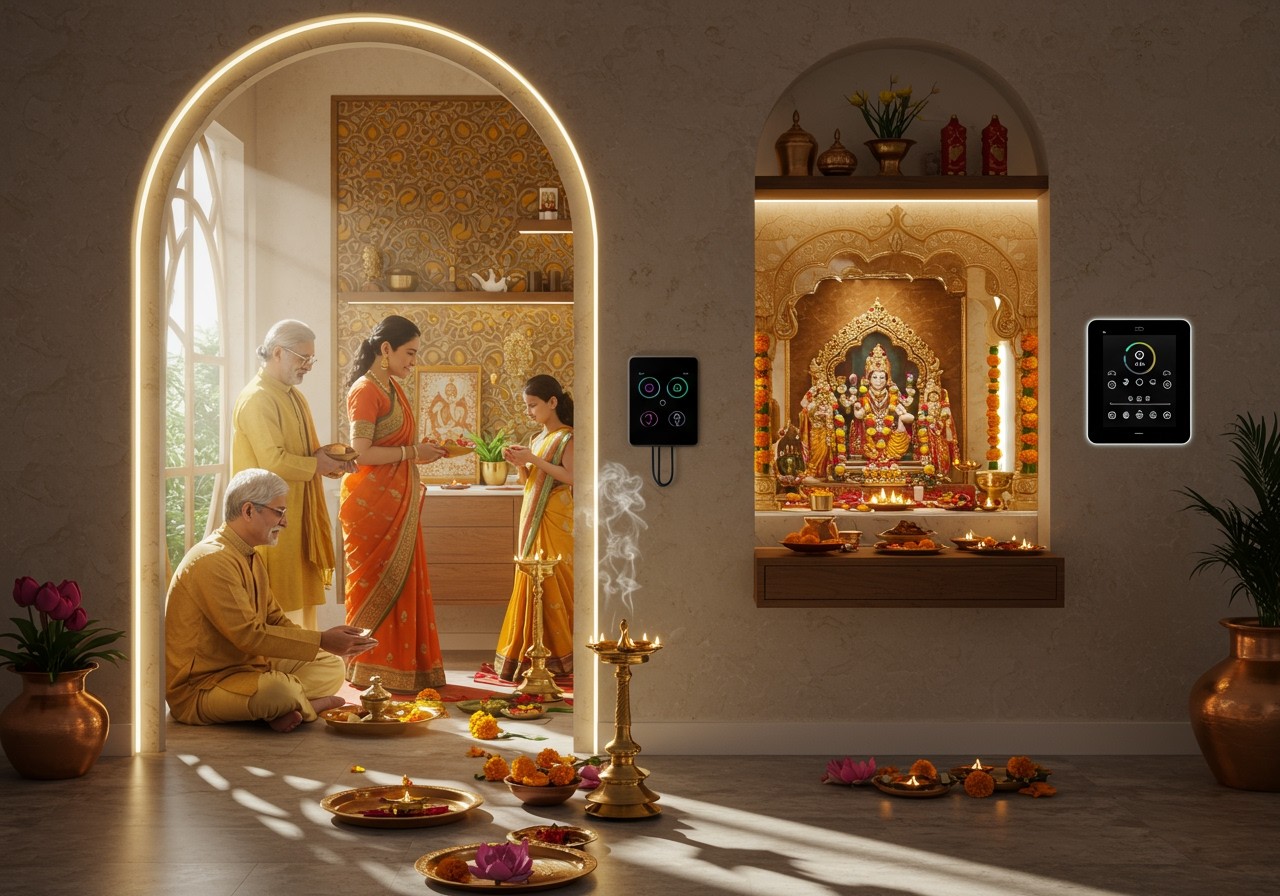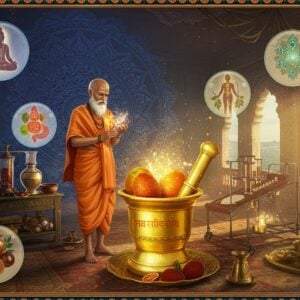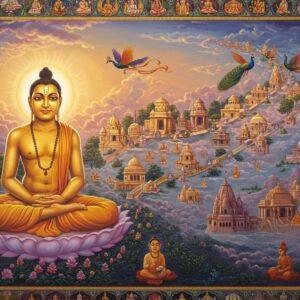
In India, Hinduism is more than just a religion; it’s a way of life, deeply woven into our culture and traditions. These customs, passed down through generations, are an integral part of our daily lives, reflecting a profound connection to our heritage. As we journey into 2025, technology plays a vital role in preserving these time-honored practices, making them more accessible and convenient for everyone. Understanding these customs, including traditional clothing, helps us appreciate the rich tapestry of India’s cultural identity.
Hindu Samskaras: Celebrating Life’s Milestones
Samskaras, the sacred rituals that mark key stages of life, hold immense significance in Hindu culture. These ceremonies are more than just rituals; they are spiritual milestones, symbolizing growth and transformation. From birth to death, they offer blessings, guidance, and a sense of belonging.
- Namakarana (Naming Ceremony): This beautiful ceremony welcomes a newborn into the family and community. The child is given a name, imbued with hopes and blessings for their future. It’s a celebration of new life and the continuity of generations.
- Upanayana (Sacred Thread Ceremony): This ceremony marks a young boy’s initiation into student life, a time for learning and spiritual growth. The sacred thread symbolizes responsibility and the pursuit of knowledge. It’s a powerful reminder of the importance of education and self-discovery.
- Vivaha (Wedding Ceremony): A cornerstone of Hindu culture, the wedding ceremony unites two families and two souls. It’s a vibrant celebration of love, commitment, and the beginning of a new chapter. The rituals symbolize the sacred bond of marriage and the promise of a shared future.
- Antyeshti (Last Rites): This ceremony is a time for reflection and remembrance, honoring the life of the departed. It offers solace to the grieving family and provides a pathway for the soul’s journey. The rituals are performed with reverence, acknowledging the cycle of life and death.
Even as times change, these Samskaras retain their sanctity, adapting to digital platforms to connect families and communities across the globe.
The Elegance of Traditional Hindu Clothing
Traditional Hindu attire is a vibrant expression of our cultural values and regional diversity. Each garment tells a story, reflecting the artistry and heritage of its region. From the flowing elegance of sarees to the regal splendor of ghagras, these outfits embody grace and tradition.
- Sarees: A timeless symbol of Indian femininity, sarees are a staple in the South. Their intricate designs and vibrant colors are often symbolic of various festivals and rituals, making them more than just clothing, they are a form of cultural expression. The six-yard wonder drapes gracefully, enhancing the wearer’s elegance and poise.
- Ghagras: Popular in the North, ghagras are known for their regal flair. The swirling skirts and ornate embellishments add a touch of grandeur to any occasion. They are particularly favored during festivals and celebrations, symbolizing joy and festivity. The vibrant colors and intricate embroidery showcase the rich artistry of Indian textiles.
There’s a beautiful resurgence of traditional clothing in urban areas, a testament to our enduring cultural pride. Online marketplaces, like Poojn.in, have made these garments accessible worldwide, supporting our talented artisans and preserving traditional craftsmanship. Many designers are incorporating sustainable practices, aligning with eco-friendly fashion trends. During festivals and ceremonies, traditional dress codes maintain a sense of continuity and heritage, connecting us to our roots.
Hindu Everyday Practices in the Digital Age
Daily Hindu practices have gracefully evolved with technology, seamlessly integrating into our modern lifestyles. Online platforms offer virtual guidance and foster community participation in rituals like puja (worship) and yoga. Mobile apps provide easy access to horoscope readings and astrology consultations, connecting the ancient wisdom with our tech-savvy generation. Traditional cooking practices are shared digitally, preserving our culinary heritage for generations to come.
Social media platforms have become a powerful tool for spreading awareness of Hindu festivals, strengthening community bonds and fostering a sense of shared celebration. Mindfulness and meditation apps, inspired by Hindu philosophies, offer practical tools for holistic well-being, promoting mental clarity and inner peace. The daily reading or recitation of sacred texts like the Bhagavad Gita remains deeply relevant, providing spiritual grounding in today’s fast-paced world.
The Significance of Festivals in Daily Life
Festivals are the heart and soul of Hindu culture, bringing joy, community bonding, and spiritual reflection. They are not just holidays; they are celebrations of life, faith, and cultural heritage. Major festivals like Diwali, Holi, and Navratri are marked with unique customs that vary across regions, adding to the richness and diversity of our traditions.
- Diwali (October 20-24): The festival of lights illuminates our homes and hearts, symbolizing the triumph of good over evil. It’s a time for family gatherings, exchanging gifts, and celebrating the return of Lord Rama to Ayodhya. The sparkling lights and vibrant fireworks fill the air with joy and festivity.
- Holi (March 14): The festival of colors is a vibrant expression of joy and unity. We celebrate the arrival of spring and the victory of good over evil with vibrant colors, music, and dance. It’s a time to let go of inhibitions and embrace the spirit of togetherness.
- Navratri (Dates Vary): This nine-night festival honors the divine feminine, Goddess Durga. It’s a time for fasting, prayer, and devotional dances like Garba and Dandiya Raas. Each night celebrates a different form of the Goddess, embodying strength, wisdom, and compassion.
These occasions strengthen family ties and reinforce the values that bind our communities together. They offer a chance to connect with our roots and pass on our cultural legacy to future generations. Poojn.in provides a wide range of products for your puja needs. You can find all the essential items, from diyas and incense to puja kits and idols, conveniently available online. Check out our Diwali collection here.
Hindu Everyday Practices and Festivals in 2025: A Deeper Dive
Hinduism, deeply ingrained in the fabric of Indian life, offers a framework for daily living, guiding us with its timeless wisdom. These practices serve as a bridge between the individual and the divine, providing spiritual nourishment and a sense of purpose. In today’s world, technology plays a vital role in making these practices accessible and relevant to our modern lives.
Daily Spiritual Nourishment
Puja, a sacred act of worship, is performed with deep devotion. It involves heartfelt prayers, soulful songs, and symbolic offerings to deities. Many Hindus find solace and connection through meditation and silent prayers, practices that focus the mind and cultivate inner peace. Yoga, an integral part of Hindu tradition, nurtures physical, mental, and spiritual well-being.
Reciting scriptures like the Bhagavad Gita or singing bhajans (devotional songs) enhances one’s spiritual journey. Engaging with religious texts deepens the understanding of Hindu philosophies, while performing charitable work embodies the spirit of devotion through karma yoga. Visiting temples offers a sacred space to seek blessings from deities and fosters a sense of community.
Chanting mantras or the names of deities helps to focus the mind and invoke divine energy. Morning rituals often include bathing or self-purification, setting a sacred tone for the day. Offering prayers to the Sun God is a traditional household responsibility, expressing gratitude and reverence. For all your puja needs, visit Poojn.in’s Holy Idols section and Holy Utensils section.
Festivals: Celebrating Our Shared Heritage in 2025
Festivals are vibrant threads in the rich tapestry of Hindu culture, bringing joy, togetherness, and a renewed sense of spiritual connection. They are not merely holidays; they are expressions of our shared heritage, fostering unity and community spirit. Each festival brings its own unique significance and celebration.
- Makar Sankranti (January 14): This festival marks the sun’s transition into Capricorn, heralding longer days and the harvest season. It’s a time for thanksgiving and celebrating the abundance of nature. Kites fill the sky, symbolizing freedom and joy.
- Maha Shivratri (February 26): Dedicated to Lord Shiva, this festival marks his divine union with Parvati. Devotees observe fasts and offer prayers, seeking blessings for a harmonious life. It’s a night of spiritual awakening and deep reverence. You can find all the puja essentials for Maha Shivratri at Poojn.in.
- Holi (March 14): The festival of colors is a vibrant celebration of good over evil. It’s a time to let loose, embrace joy, and strengthen community bonds with vibrant colors, music, and dance. The playful spirit of Holi brings people together, fostering unity and harmony.
- Ram Navami (April 6): This auspicious day celebrates the birth of Lord Rama, an embodiment of righteousness and virtue. It’s a time for prayer, reflection, and reaffirming our commitment to dharma. Homes are decorated and stories of Rama’s life are shared, inspiring devotion and moral values. Find beautiful Rama idols for your puja at Poojn.in.
- Hanuman Jayanti (April 13): This festival celebrates the birth of Lord Hanuman, a symbol of strength, devotion, and selfless service. Devotees offer prayers and seek his blessings for courage and protection. It’s a time to honor unwavering loyalty and dedication.
- Guru Purnima (July 9): This sacred day is dedicated to honoring our spiritual teachers, the gurus who guide us on our path to enlightenment. It’s a time to express gratitude for their wisdom and guidance. The guru-shishya parampara (teacher-student tradition) is deeply valued in Hindu culture.
- Krishna Janmashtami (August 16): This joyous festival celebrates the birth of Lord Krishna, an embodiment of love, wisdom, and divine playfulness. It’s a time for devotional songs, dances, and reenactments of Krishna’s childhood leelas (divine plays). Celebrate Janmashtami with authentic puja items from Poojn.in.
- Diwali (October 20-24): The festival of lights shines brightly, signifying the victory of light over darkness, good over evil, and knowledge over ignorance. Families decorate their homes, light diyas (oil lamps), and exchange gifts, celebrating the return of Lord Rama to Ayodhya. The festive atmosphere brings joy and togetherness, fostering unity and community spirit. Prepare for Diwali with Poojn.in’s festive collection.
These festivals embody the spirit of ‘Vasudhaiva Kutumbakam’ (the world is one family), promoting harmony and inclusivity. They also play a significant role in supporting local economies, sustaining artisans and traditional craftsmanship. As we embrace technology, Hinduism’s rich heritage continues to inspire unity and spirituality in our lives today.
FAQs on Hinduism in Daily Life: A 2025 Guide
What are Hindu Samskaras?
Hindu Samskaras are sacred rites of passage, marking significant milestones throughout an individual’s life. They begin at conception and continue through birth, childhood, education, marriage, and even beyond. These ceremonies are not mere rituals; they are spiritual sacraments, designed to purify and bless individuals at each stage of their life’s journey, offering guidance and support along the way. They serve as a powerful reminder of our connection to the divine and our place within the larger community.
Why do Hindus perform Puja daily?
Daily Puja is a cornerstone of Hindu practice, an expression of deep devotion and gratitude to the divine. It’s a way to connect with the sacred, seek blessings, and maintain a vibrant spiritual connection. Puja can range from a simple, heartfelt prayer to a more elaborate ritual involving offerings like flowers, incense, and food. It’s a daily act of reverence, acknowledging the divine presence in our lives and expressing our deepest aspirations. You can find everything you need for your daily puja at Poojn.in.
What is the significance of wearing traditional Hindu clothing?
Traditional Hindu attire, like sarees for women and dhotis or kurta-pajamas for men, carries deep cultural and religious significance. More than just clothing, these garments symbolize respect for tradition, reverence for the divine, and a connection to our rich heritage. They are often worn during rituals and festivals, enhancing the sacred atmosphere and expressing our cultural identity. The artistry and craftsmanship of these garments also reflect the diversity and beauty of Indian textiles.
How do Hindus celebrate festivals at home?
Festivals are celebrated with great joy and devotion in Hindu homes. We perform special pujas, decorate our homes with colorful rangolis and lights, prepare traditional delicacies, and exchange gifts with loved ones. Each festival has its unique customs and traditions, passed down through generations. It’s a time for families and communities to come together, strengthening bonds and celebrating our shared heritage. Looking for authentic puja items and festive decorations? Explore the wide selection at Poojn.in.
What role does meditation play in Hindu daily life?
Meditation is an integral part of Hindu spiritual practice, a pathway to achieving inner peace, mindfulness, and self-awareness. It’s a technique for focusing the mind, reducing stress, and connecting with our inner selves. Many Hindus incorporate meditation into their daily routines as a way to cultivate tranquility and enhance their spiritual well-being. It’s a practice that helps us navigate the challenges of modern life with greater clarity and calmness.
Why is the Ganga River important in Hinduism?
The Ganga River holds immense sacred significance in Hinduism, revered as a divine mother and a symbol of purity. Hindus believe that bathing in the Ganga can cleanse sins and purify the soul, aiding in the journey towards liberation. Its water is considered holy and is used in various rituals and ceremonies, particularly during festivals and significant life events. The Ganga represents life, purification, and spiritual renewal.
What is the purpose of observing fasting in Hinduism?
Fasting in Hinduism is more than just abstaining from food; it’s a spiritual practice aimed at self-discipline, purification, and deepening one’s connection to the divine. It is believed to cleanse the body and mind, allowing individuals to focus on prayer, meditation, and introspection. Fasting is observed on specific days or during festivals like Navratri and Ekadashi, enhancing spiritual awareness and devotion.
How do Hindus use incense in their rituals?
Incense plays an important role in Hindu rituals, purifying the surroundings and creating a sacred atmosphere. The fragrant smoke is believed to please the deities and enhance the spiritual experience during puja and other religious ceremonies. The different aromas are also associated with specific deities and energies, adding another layer of symbolism to the ritual. Explore a variety of incense at Poojn.in’s Holy Cosmetics section.
Embracing Tradition in Modern Times
Hinduism beautifully integrates tradition into the tapestry of daily life, offering a path towards spiritual growth and fulfillment. As we navigate the complexities of 2025, these age-old customs and vibrant festivals continue to enrich our lives, providing guidance and meaning. With technology as our ally, these practices become even more accessible, connecting us to our heritage wherever we are. Through daily rituals like puja and meditation, and celebratory festivals like Diwali and Holi, we carry forward the essence of Hindu culture, honoring our past while embracing the future.


